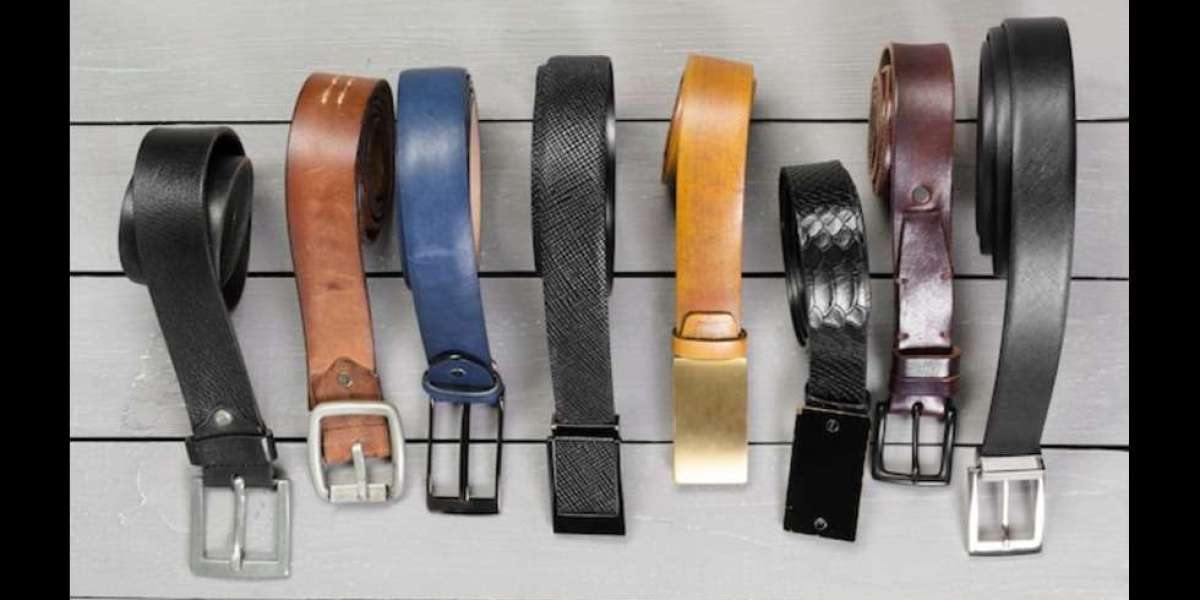Men's belts are more than just a practical accessory for keeping pants in place; they are a crucial element of a man's wardrobe that can elevate his style and reflect his personality. This guide will delve into the world of men's belts, exploring their history, types, materials, and tips for choosing the right belt for any occasion. By the end of this article, you'll understand why a good belt is a must-have in every man's closet.
A Brief History of Men's Belts
The belt has been a fundamental part of men's attire for centuries. Initially, belts were purely functional, used to secure clothing and carry tools or weapons. In ancient times, belts were often made from leather or cloth and were essential for soldiers and laborers. During the Middle Ages, belts evolved to become more decorative, adorned with intricate designs and used to display status and wealth.
The modern men's belt, as we know it today, began to take shape in the 19th century with the advent of trousers that required a means of support. Over time, the belt transformed from a simple utility item to a fashion statement, incorporating various materials, styles, and buckles to suit different tastes and occasions.
Types of Men's Belts
Men's belts can be categorized into several types based on their design, material, and intended use. Understanding these categories can help you choose the perfect belt for any outfit.
1. Formal Belts
Formal belts are typically made from high-quality leather and feature a sleek, polished finish. They are designed to complement dress pants, suits, and formal attire. The buckle is usually simple and understated, often in a metallic finish such as silver or gold. The width of a formal belt is usually around 1 to 1.5 inches.
2. Casual Belts
Casual belts offer more flexibility in terms of materials and designs. They can be made from leather, canvas, or synthetic materials and come in various colors and patterns. Casual belts are perfect for pairing with jeans, chinos, and casual trousers. The buckles can be more elaborate or fun, adding a touch of personality to your outfit.
3. Reversible Belts
Reversible belts are a practical choice for those looking to maximize their wardrobe options. These belts have a rotating buckle that allows you to switch between two different colors or finishes, making them versatile and cost-effective.
4. Braided Belts
Braided belts are a popular choice for casual wear. Made from interwoven leather or fabric strands, they offer a unique texture and can easily be adjusted for a comfortable fit. Braided belts are ideal for summer outfits and add a relaxed, bohemian vibe to your look.
5. Designer Belts
Designer belts are a statement piece, often featuring prominent logos or distinctive designs from luxury brands. These belts can elevate any outfit and are a way to showcase your personal style and brand loyalty.
Choosing the Right Material
The material of a belt is crucial in determining its look, feel, and durability. Here are some common materials used in men's belts:
1. Leather
Leather is the most traditional and popular material for men's belts. It is durable, versatile, and ages well, developing a unique patina over time. Full-grain leather is the highest quality, made from the top layer of the hide and known for its strength and natural texture. Genuine leather, on the other hand, is made from the lower layers of the hide and is more affordable but less durable.
2. Canvas
Canvas belts are lightweight and breathable, making them ideal for casual and summer wear. They are often available in a wide range of colors and patterns, allowing for more playful and relaxed styling options.
3. Suede
Suede belts offer a softer, more textured alternative to traditional leather. They are perfect for adding a touch of sophistication to casual outfits and work well with items like chinos and blazers.
4. Synthetic Materials
Synthetic belts, made from materials like polyurethane or polyester, are often more affordable and can mimic the look of leather. They are also available in various colors and styles, making them a versatile option for those on a budget.
Tips for Choosing the Perfect Men's Belt
Selecting the right belt involves considering several factors, including the occasion, your outfit, and personal preferences. Here are some tips to help you make the best choice:
1. Match the Belt with Your Shoes
A general rule of thumb is to match the color and finish of your belt with your shoes. For example, if you're wearing black leather shoes, opt for a black leather belt. This creates a cohesive and polished look.
2. Consider the Belt Width
The width of the belt should complement your outfit. Formal belts are typically narrower, while casual belts can be wider. A belt that is too wide or too narrow can throw off the balance of your outfit.
3. Choose the Right Buckle
The buckle of your belt should align with the formality of your outfit. Simple, understated buckles are best for formal occasions, while more elaborate designs can be suitable for casual wear. Additionally, ensure the buckle size is proportionate to your body frame.
4. Ensure a Proper Fit
A well-fitting belt should have a few inches of leather to the left of the buckle when fastened. Ideally, the belt should fit comfortably in the middle hole, allowing for slight adjustments as needed. Measure your waist size and add 2-3 inches to find the correct belt length.
5. Invest in Quality
A good-quality belt can last for years and significantly enhance your wardrobe. Invest in belts made from high-quality materials, such as full-grain leather, and pay attention to craftsmanship details like stitching and buckle attachment.
Caring for Your Belts
Proper care and maintenance can extend the life of your belts and keep them looking their best. Here are some tips for caring for different types of belts:
1. Leather Belts
- Clean leather belts with a damp cloth and mild soap.
- Condition the leather periodically with a leather conditioner to keep it supple and prevent cracking.
- Store leather belts flat or rolled to avoid creases.
2. Canvas Belts
- Spot clean canvas belts with a mild detergent and water.
- Allow them to air dry completely before wearing.
3. Suede Belts
- Use a suede brush to remove dirt and restore the nap of the material.
- Protect suede belts from water and stains by using a suede protector spray.
Men's belts are an indispensable accessory that combines functionality with style. Whether you're dressing up for a formal event or keeping it casual, the right belt can enhance your outfit and reflect your personal style. By understanding the different types of belts, choosing the right material, and following tips for proper fit and care, you can ensure that your belts remain a versatile and timeless addition to your wardrobe. Investing in high-quality belts and maintaining them properly will not only elevate your style but also provide lasting value for years to come.







